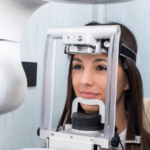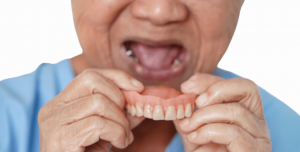Teeth braces correct dental issues like crowded, crooked teeth or a misaligned jaw, known as malocclusion. Braces are made of metal or ceramic, wires, and bonding material that attaches them to the teeth. It may be uncomfortable for the first week, but it does not hurt when they are inserted.
How do braces correct the teeth?
Braces correct the teeth by moving them by exerting constant pressure on the teeth for extended periods. The shape of the jaw gradually adapts to conform to the pressure. The membrane underneath the gum is surrounded by the bones that root the teeth to the jaw. This membrane controls the position of the teeth, and it responds to the pressure being put on the teeth by braces. The exact way this happens depends on the type of braces inserted.
There are several types of braces. The best kind is determined by a few factors, such as the patient’s issue, the severity of the condition, and the patient’s personal preferences.
What are the types of braces?
- Metal braces. Metal braces use steel bands, brackets, and wires to shift the teeth over time gently. Metal braces are visible when you smile. There are different metal braces, including clear tooth-coloured or brightly coloured ligatures.
- Ceramic braces. Sometimes called clear braces — they work the same way as metal braces. The significant difference is that the brackets, wires, and ligatures are tooth-coloured, so they blend in with the smile. Ceramic braces are still visible, but they’re less noticeable.
- Lingual braces. Lingual braces are also like metal braces, but they go on the back surfaces of the teeth instead of the front.
- Self-ligating braces. Self-ligating braces look like traditional metal braces. The main difference is that, instead of ligatures (tiny elastic bands), self-ligating braces use a built-in system to hold the arch-wire in place.
- Clear aligners. Sometimes called “invisible braces,” clear aligners are a braces alternative. Instead of brackets and wires, clear aligners use a series of custom-made trays to straighten the teeth over time. The patient wears each set of aligner trays for approximately two weeks. Then, swap those trays out for the next set in the series. Unlike metal braces, clear aligners are removable but must be worn for at least 22 hours daily. Aligners are only taken off to eat, drink and brush their teeth.
Braces are most often prescribed during childhood or early adolescence. However, adults are also getting braces more frequently.
How do you know you need braces?
Symptoms that can indicate you need braces include:
- Teeth that are visibly crooked or crowded.
- Difficulty flossing between and brushing around crooked teeth.
- Frequently biting the tongue or cutting the tongue on the teeth.
- Teeth that don’t close over each other properly when the mouth is at rest.
- Difficulty pronouncing certain sounds due to the tongue’s position under the teeth.
- Jaws that click or make noises when chewing or first waking up.
- Stress or fatigue on the jawline after chewing food.
When to consult a dentist?
It is recommended that children have an appointment with a dentist or an orthodontist no later than age seven. The logic behind this recommendation is that when a need for braces is identified, early treatment can improve outcomes. Even children with no visible crowding or slant to their teeth can benefit from check-in with a dentist. However, you’re never too old for braces, and it doesn’t mean you should continue to put off treatment.
Sources












